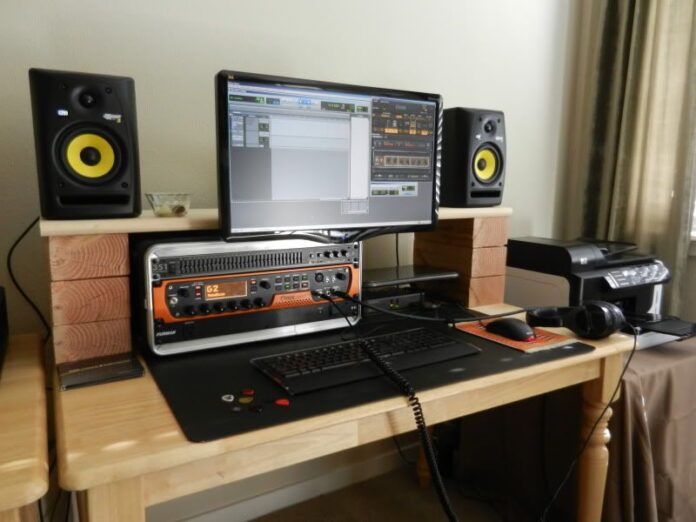Nowadays it’s very easy to start producing your music considering you can set the studio in the comfort of your own home. Home studios have advantages as well as disadvantages. A big advantage is that it’s not very expensive to buy basic gear. The gear for mixing and mastering can be quite costly, but you can always use online music mixing services if you want your song to be mixed by a professional audio engineer. A significant disadvantage is that home music studios are quite limited when it comes to the quality of the sound and the space available for storage. So in this article, we will tell you how you can improve your home studio to achieve greater results.
Check Your Equipment
First of all, take a look at the equipment and gear you already own. Sort out everything you use and don’t use. Throw out or sell everything you don’t need to prevent it from cluttering in one drawer. Once you get rid of the stuff you don’t use, organize the rest in logical order. Put everything that goes together in one drawer, line up the mics, put guitars on guitar stands
e.t.c.
Keep your gear up to date and see if you can replace any analog devices with digital tools. It doesn’t mean that you have to get rid of your favorite analog synths there will always be room for them in the corner of your studio. But take a good look at everything you have and be honest with yourself. Do you need that old vocoder that you haven’t used for ages? Remember, space is the main priority when it comes to building your home studio.
Organize your space
Repurpose your drawers. There are probably a lot of accessories in your studio, but you certainly don’t need them all to be crowded on your desk. So you may try repurposing the pieces of furniture that you already own into storage units for your home studio. Your socks drawer can be a great place to store accessories or cables. With a little bit of creativity, you can find a new home for your socks.
Once in a while try to reorganize your studio completely. When your collection of gear starts to grow it might become hard to find a place for your new toys. In that case, it is useful to start from scratch. Bring out everything you have and reorganize it in a new order without trying to put everything back where it was. Remember functionality is the key here.
One of the most important pieces of furniture in your studio is your desk. Ideally, it should be suited to accommodate your laptop, audio monitors, and MIDI controller as well as an audio interface. You may try fitting it all on your dinner table, but chances are high that it won’t be very effective. A multi-level desk with rack bays and shelf space is perfect for this because it provides enough workspace and will help you keep everything in order.
Cables – keep them in order
Keep your cables organized. Given the amount of electronic gear you work with, it’s important to be able to find the right cable quickly. You can organize them in cable ducts, however, it’s not very practical. Using patch bays is more convenient and gives you more flexibility. Another thing you may try with cables you don’t currently use is clothes hooks. If you install them along the side of the desk you can put the cables on them. These are great to prevent cables from tangling.
The biggest difference between a home studio and a professional recording studio is acoustic treatment. Getting a renovation and soundproofing the whole room might not be an option as you still want to be able to live in your home. But you should at least take care of the space around the place where you usually make music. If you are good at DIY stuff you can try making an acoustic panel yourself, following a YouTube tutorial.






